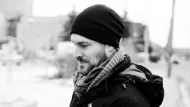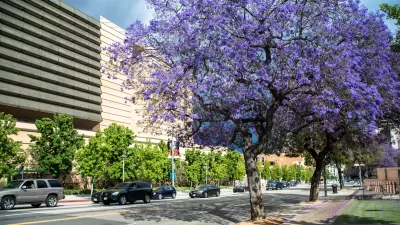Parks have long been likened to "the lungs of the city." But to better capture the totality of parks' role in our urban milieu a more apt metaphor is necessary.
Responding to the sanitary and air quality conditions of cities in the late 19th century, Frederick Law Olmsted spoke of parks as “the lungs of the city”. This metaphor was meant to convey the importance of having large green areas where people could breathe fresh air and escape from their polluted city.
The metaphor has been expanded to illuminate the provision trees provide through respiration: the tacit relationship between air quality and our physical health. A metaphor is an effective tool to raise awareness, and the “lungs of the city” has been an effective one. But perhaps now it’s necessary to update the metaphor to better capture the totality of parks' role in our urban milieu.
Rather than lungs of natural vegetation dispersed throughout a developed city, we can look at these fragments within a whole and ask how might these constituent elements be connected to advantage the total ecological system. To put it simply, we need to recognize that successful ecological function within an urban environment can be attributed to the quality and physical amount of green areas and the number of connections between them.
As ecologist Aldo Leopold put forward in a 1939 speech, we need to recognize conservation within a system – “the biota as a whole” – and move away from discrete elements that sustain “what we now call ecosystem health and resilience”.[i] It’s paramount that we see the array of urban parks as a system rather than dispersed land use parcels, as what continues to dominate contemporary land use planning.
This systems approach was captured in The City of Calgary’s Parks 1994 Natural Area Management Plan: “a systems approach [to natural areas planning and management] reduces the risk of habitat deterioration associated with small individual habitats.” If implemented, systems planning and development would help ensure the overall health of Calgary’s natural systems.
When ecological areas are connected, they are higher functioning in terms of biological processes, which are already anemic in the balance between conservation and urban development. Even when natural areas are conserved, the boundary condition between soil and asphalt – to be simplistic – is going to have an impact on adjacent biological processes. Thus instead of isolated lungs dispersed throughout a city, these areas must be seen as a system that is foundational to our social, environmental and economic success in urban living.
Perhaps we need to update the human body metaphor to better reflect this total system. We know that without a stable and healthy urban ecology our survival in cities would be a meager one. As Olmsted recognized, parks as a place of reprieve helps enable our personal health and wellbeing. They also provide us with food and fresh water; they regulate local climate and mitigate extreme weather events; they also provide an aesthetic experience connecting us to ourselves and each other. These are but some of the numerous provisions, regulations and experiences that parks give us.
Broadening our understanding of the true necessity of having an interconnected urban parks system – and having a metaphor representative of this multitude – will only further remind us of the fundamental importance of proactive parks planning and management in city development; for once an organ is removed from its system, returning to normal levels of physical activity might be an impossibility.
[i] Meine, C. “Conservation biology: past and present” in Conservation Biology for All. 2010, Oxford University Press.

Planetizen Federal Action Tracker
A weekly monitor of how Trump’s orders and actions are impacting planners and planning in America.

Maui's Vacation Rental Debate Turns Ugly
Verbal attacks, misinformation campaigns and fistfights plague a high-stakes debate to convert thousands of vacation rentals into long-term housing.

Restaurant Patios Were a Pandemic Win — Why Were They so Hard to Keep?
Social distancing requirements and changes in travel patterns prompted cities to pilot new uses for street and sidewalk space. Then it got complicated.

In California Battle of Housing vs. Environment, Housing Just Won
A new state law significantly limits the power of CEQA, an environmental review law that served as a powerful tool for blocking new development.

Boulder Eliminates Parking Minimums Citywide
Officials estimate the cost of building a single underground parking space at up to $100,000.

Orange County, Florida Adopts Largest US “Sprawl Repair” Code
The ‘Orange Code’ seeks to rectify decades of sprawl-inducing, car-oriented development.
Urban Design for Planners 1: Software Tools
This six-course series explores essential urban design concepts using open source software and equips planners with the tools they need to participate fully in the urban design process.
Planning for Universal Design
Learn the tools for implementing Universal Design in planning regulations.
Heyer Gruel & Associates PA
JM Goldson LLC
Custer County Colorado
City of Camden Redevelopment Agency
City of Astoria
Transportation Research & Education Center (TREC) at Portland State University
Jefferson Parish Government
Camden Redevelopment Agency
City of Claremont






























